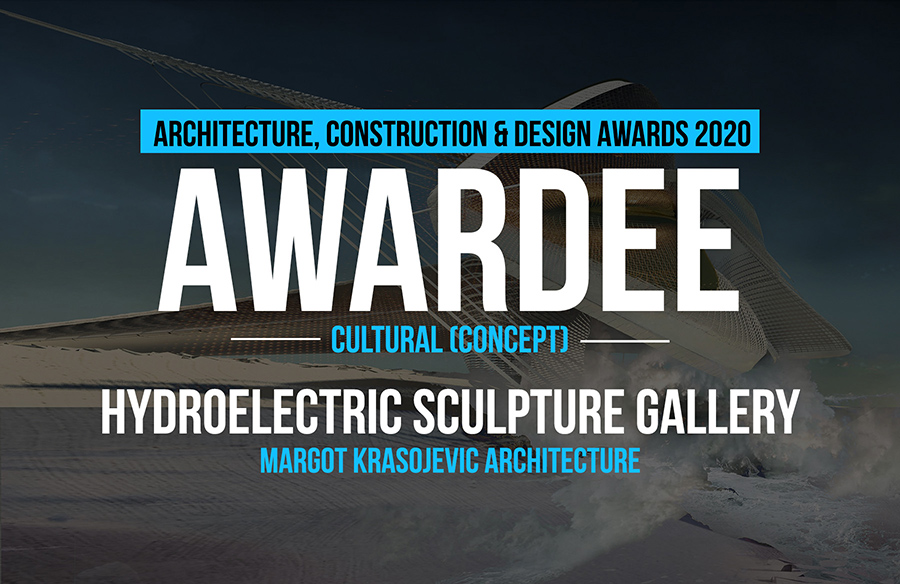The design uses renewable energy to redefine typologies in architecture and the built environment. The site is located in Sochi, a coastal city on the Black Sea in Russia, the building employs the oscillating water column principle to harness wave energy converting this mechanical energy to generate electricity, the building also accommodates a sculpture gallery. This symbiotic program merges a small power plant capable of producing up to 300kW with a sculpture gallery in the attempt to redefine typologies to accommodate for self-sufficiency by generating sustainable energy that is fed back into the grid, this project aims to run 200 households and businesses within its vicinity.
Architecture, Construction & Design Awards 2020
Second Award | Cultural (Concept)

| Project Details | |
| Project Name: | Hydroelectric Sculpture Gallery |
| Studio Name: | Margot Krasojević Architects |
| Design Team: | Margot Krasojević |
| Area: | 2,000m2 |
| Year: | 2019- |
| Location: | Sochi, Russia |
| Consultants: | Arup, London |
| Photography Credits: | Margot Krasojević |

©Margot Krasojević
The Black sea is a contained body of water, an inland sea that has a surprisingly strong swell and coastal wave energy potential, effective enough for water turbine engineering. The building overhangs the coastline, projecting over the existing promenade it is cantilevered and partly submerged into the sea, angled at 45 degrees to the coastline for maximum wave exposure similar to the nearby jetties it increases wave generation as swell refracts around it to produce high-quality right-handers, the partly submerged projected element is designed to function similarly to an oscillating water column, increasing tidal strength on impact with the building and reducing land erosion. The angle of the coastline sculpture gallery matches the angle of the swell which in turn creates point break waves that do not lose their strength as they travel, the architecture influences the waves, it is not an obedient structure accommodating to its environment instead it stands apart from it making us reconsider our relationship to this environment and our immediate context. As wave energy converges against the projecting building element and sculpture gallery it activates the oscillating water column section.

©Margot Krasojević
The art gallery consists of two areas connected by walkways and ramps, it rises out of the promenade, it’s primary steel structure sections rolling into each other like a wave. An array of turbines line the partly submerged power plants oscillating water column surface, as seawater flows into the submerged chamber airflow pressure increases forcing the five Wells turbines located at the top of the chamber to rotate as the seawater rises and falls, Wells turbines always rotate in the same direction regardless of airflow direction, this mechanical energy is converted into electricity with an average 70% efficiency rate. Generators are positioned on the promenade to the rear of the building revealing the very nature of the architecture and emphasising this hybrid typology. The small power plant feeds electrical energy back into the grid by supplying climate-friendly energy to approximates 200 homes and businesses within its vicinity.

©Margot Krasojević
The sculpture gallery is woven into the power plant structure, its roof rolls like a point break wave between both the energy plant and the sculpture gallery. The steel-clad layered ceiling mimics the waves by changing densities across its section from structural to cladding the self-supporting structure projects the turbine water column into the surf.
- ©Margot Krasojević
- ©Margot Krasojević
- ©Margot Krasojević








